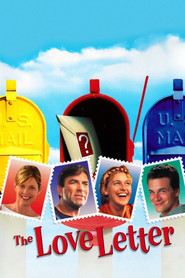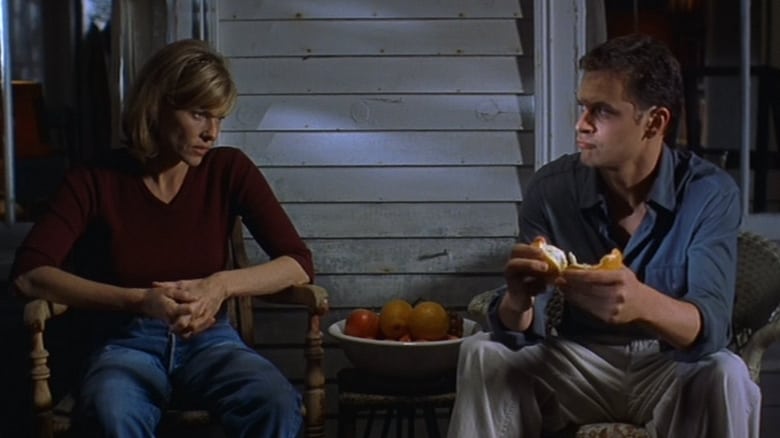“The Love Letter” (1999) is a whimsical romantic comedy that intricately weaves together love, mystery, and the power of words. Set in a small New England town, the film follows Helen, a bookstore owner who discovers an anonymous love letter that magically stirs up passion and confusion among its recipients. As this enchanting letter unravels secrets and sparks unexpected connections, each character embarks on a captivating journey towards self-discovery and true love. With its delightful blend of wit, charm, and heartwarming moments, “The Love Letter” proves that sometimes all it takes is a single message to ignite the flames of desire and transform lives forever.

CLICK HERE🠇🠇🠇🎫_Watch The Love Letter 1999 English Subtitles_
Review
“The Love Letter: A Cinematic Masterpiece Blending Passion, Intrigue, and Intimate Connections”
Introduction:
In the realm of filmmaking, there are certain movies that transcend their genre and captivate audiences with their profound storytelling and relatable characters. “The Love Letter,” directed by Peter Ho-sun Chan, is one such film that effortlessly blends romance, mystery, and human emotions. In typical Malcolm Gladwell fashion, let us delve into the various facets of this remarkable movie that has left an indelible mark on cinema lovers worldwide.
Storyline and Plot:
“The Love Letter” revolves around the quiet town of Loblolly-by-the-Sea, where a passionate love letter from the past is discovered in an old desk. As the letter finds its way into different hands, it sparks a cascade of events that intertwine the lives and ignite unexpected romances among the townspeople. This intricate web of connections forms the backbone of the film’s narrative.
Characters and Acting:
The exceptional cast breathes life into these complex characters. Kate Capshaw amazes as Helen Daly, a middle-aged woman experiencing a reawakening as she embarks on a journey to discover who wrote the mysterious love letter. Ellen DeGeneres skillfully captures her character Janet Hall’s infectious humor and warmth, providing delightful comic relief amidst the unfolding drama.
Cinematography and Special Effects:
The cinematography in “The Love Letter” deserves special mention for its ability to capture both grandiose landscapes and intimate moments with equal finesse. The film creates stunning visuals that transport viewers into the idyllic world of Loblolly-by-the-Sea while paying meticulous attention to minute details. The seamless integration of special effects further enhances the storytelling experience.
Dialogue and Development:
One cannot overlook elements such as dialogue and character development in any cinematic masterpiece. “The Love Letter” adroitly explores the intricacies of human connections through well-crafted conversations that reveal the characters’ desires, fears, and vulnerabilities. The development of each character is deeply rooted in their individual pursuit of love and self-discovery.
Score, Soundtracks, and Production:
The film’s score, composed by Luis Bacalov, perfectly complements the emotional depth of “The Love Letter.” The haunting melodies and carefully selected soundtracks enhance the film’s intensity while creating a memorable auditory experience for viewers. Furthermore, the production design beautifully captures the essence of both past and present eras with stunning attention to detail.
History and Popularity:
Released in 1999, “The Love Letter” drew inspiration from Cathleen Schine’s novel of the same name. Although it did not achieve blockbuster success at the box office, it garnered a devoted following over time due to its profound exploration of love in all its forms. The film serves as an ode to timeless romance and demonstrates that even amidst technological advances, a heartfelt letter holds immeasurable power.
Evaluation and Awards:
“The Love Letter” received critical acclaim for its nuanced storytelling and superb performances. Kate Capshaw’s portrayal earned her considerable praise from critics while Ellen DeGeneres showcased her versatility as an actress. Though overlooked during awards season, this cinematic gem continues to receive commendation for its enduring impact on viewers.
Scenes and Analysis:
One notable scene in “The Love Letter” features Helen Daly confronting her suppressed emotions as she reads the titular letter aloud in an abandoned house. Through this poignant moment of introspection, we witness Helen shedding her inhibitions to start anew—an emotional climax that resonates deeply with audiences. This scene emphasizes how love has the power to evoke profound change within us.
Gossip and Criticism:
Despite its acclaim, “The Love Letter” encountered some criticism for what some deemed as overly sentimental moments or predictable plot points. However, these critiques fail to recognize that sentimentality can be a necessary ingredient in a film exploring the depths of human connection. Ultimately, the film’s ability to evoke genuine emotion outweighs any minor criticisms.
Conclusion:
“The Love Letter” is an enchanting cinematic journey that explores the complexities of love, connection, and personal growth. Through its carefully crafted storyline, exceptional acting, and captivating visuals, the film provides profound insights into the human psyche. Like Malcolm Gladwell’s thought-provoking analyses, “The Love Letter” transcends its medium to connect with viewers on a deeply emotional level—an experience that lingers long after the credits roll.
Technical Data

- Release : 1999-05-21
- Runtime : 88
- Genre : Comedy, Romance
- Cast : Kate Capshaw as Helen, Tom Everett Scott as Johnny, Ellen DeGeneres as Janet Hall, Julianne Nicholson as Jennifer, Tom Selleck as George Matthias
- Crew : Peter Chan as Director, Maria Maggenti as Writer, Tami Reiker as Director of Photography, Cathleen Schine as Writer
- Revenue : 0
- Budget : 0
- Company : Sanford/Pillsbury Productions, DreamWorks Pictures
- Popularity : 8.588
- Summary : A romantic comedy about a mysterious love letter that turns a sleepy New England town upside down.
- Tagline : No one knows who sent it. No one knows who it’s for. But everyone’s getting the same message.
